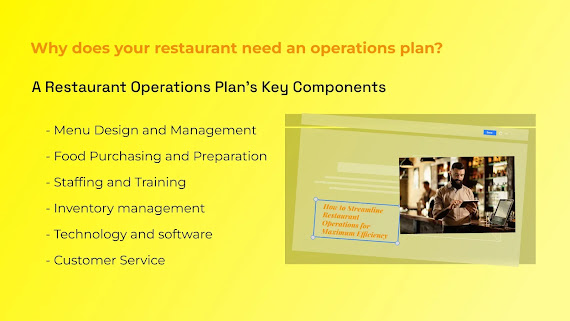Crafting an Effective Restaurant Mission Statement: Your Step-by-Step Guide
Your restaurant's mission statement serves as a beacon, guiding both internal and external stakeholders towards a shared purpose and vision. It's a vital component of your brand identity, shaping how you manage and operate your establishment. While many restaurant mission statements are functional, crafting an exceptional one can set your business apart. Whether you're launching a new venture or refining an existing one, knowing how to create a compelling mission statement is invaluable.
In this guide, we'll explore the significance of a restaurant mission statement, what makes it effective, and when and how to develop one that resonates with your audience.
Understanding a Restaurant's Mission Statement
A restaurant's mission statement encapsulates the company's purpose and objectives in a concise manner. Typically developed by restaurant managers, these statements are designed to communicate the brand's values and differentiate it from competitors. Mission statements can be prominently displayed within the restaurant or featured in promotional materials to reinforce the brand's identity.
Why Your Restaurant Needs a Mission Statement
Crafting a mission statement for your restaurant serves several crucial purposes:
Clearly Communicate Purpose: A mission statement articulates your restaurant's core purpose and business goals, providing clarity for customers and stakeholders alike.
Set Expectations: By outlining what your restaurant stands for, you help customers know what to expect, whether it's homemade comfort food or an authentic cultural experience.
Provide Direction: Your mission statement serves as a guiding principle for decision-making, informing everything from menu selection to marketing strategies.
Highlight Differentiation: In a competitive market, a well-crafted mission statement can differentiate your restaurant from others, showcasing what makes you unique.
Foster Customer Connection: A compelling mission statement can resonate with customers, enhancing their overall experience and fostering loyalty.
What Constitutes a Good Mission Statement?
An effective restaurant mission statement should:
- Clearly define what your restaurant does and how it delivers its customer experience.
- Articulate the restaurant's purpose and why it was established.
- Set expectations for customers, employees, and stakeholders.
- Highlight the value the restaurant brings to its community.
- Use concise language and provide direction for restaurant activities.
When to Develop a Restaurant Mission Statement
If you're launching a new restaurant, drafting a mission statement should follow a thorough SWOT analysis, considering the restaurant's strengths, weaknesses, opportunities, and threats. Once established, the mission statement can inform your business plan and guide decision-making.
For existing restaurants, conducting a SWOT analysis is also beneficial when undergoing a brand refresh, expanding to new locations, or implementing new processes. Regularly review and update your mission statement to ensure alignment with your restaurant's goals and values.
Crafting Your Restaurant Mission Statement
To create a compelling mission statement for your restaurant, consider the following steps:
Value Statement: Define your restaurant's core values, focusing on what sets you apart from competitors.
Vision Statement: Articulate why your restaurant concept is meaningful and how it can positively impact the community.
Mission Statement: Outline how you intend to achieve your objectives and fulfill your restaurant's purpose.
Cultural Statement: Establish the internal values and beliefs that shape your restaurant's culture and interactions with customers and employees.
Inspiration for Your Restaurant Mission Statement
Draw inspiration from competitors and successful restaurant brands, noting elements that resonate with your own vision.
Identify establishments you admire and analyze their mission and vision statements for inspiration.
Consider the needs and values of your target audience when crafting your mission statement.
Strive to create a unique and compelling statement that reflects your restaurant's identity and objectives.
Examples of Restaurant Mission Statements
Here are some examples of mission statements from well-known restaurant brands:
McDonald's: "To be our customers' favorite place and way to eat and drink, by providing a great customer experience through People, Products, Place, Price, and Promotion."
Dunkin' Donuts: "To be the premier provider of a diverse choice of delicious beverages and baked goods throughout the kingdom in a convenient, relaxing, and welcoming environment."
Buffalo Wild Wings: "To wow our guests by providing the highest level of satisfaction with an unparalleled focus on friendly service, food, fun, and value."
Panda Express: "To provide great Asian dining experiences by creating an organization that inspires people to better themselves."
Applebee's: "To contribute to the development, joy, and enrichment of all the lives we touch."
Wendy’s: "To provide high-quality products and services to our customers and communities through leadership, innovation, and collaboration."
Cheesecake Factory: "To create an environment where complete visitor happiness is our top goal."
After Creating Your Mission Statement
Once you've developed your restaurant mission statement, use it as a guiding principle to inform your business strategies and operations. Incorporate your vision statement, define your beliefs, and integrate them into your business plan. Regularly revisit and revise your mission statement to ensure alignment with your restaurant's evolving goals and values.
Crafting an effective restaurant mission statement requires thoughtful consideration and a deep understanding of your brand identity and objectives. By following these steps and drawing inspiration from successful examples, you can create a compelling mission statement that resonates with your audience and sets the stage for your restaurant's success.




Comments
Post a Comment